Prompted by a couple of recent records of Cave Swallows in the northeastern US, I’ve taken a fresh look at subspecies and done some new illustrations. In April 2021 Cave Swallows have been found in New Jersey and Massachusetts. Both have been identified as the Caribbean subspecies group. Since the 1990s Cave Swallow has been a rare but regular late fall visitor to the northeast, but all of those are presumed to be of the Mexican subspecies. Spring records in this region are much rarer, and most have been suspected or confirmed to be from the Caribbean.
Caribbean birds average darker and more richly colored, and a little smaller. These are significant differences in the average appearance of birds of the two groups, but there is so much variation that identifying any single bird out of range seems extremely difficult. In the 2000 edition of the Sibley Guide to Birds I illustrated both subspecies groups. In the 2014 revision I chose not to show the subspecies because my research had made me doubt that they were reliably identifiable in the field. Further research, and the spring 2021 records, has prompted me to revisit the issue. They’re still hard to identify, but there are differences that should allow at least some to be identified, and hopefully these illustrations can provide a stepping stone to further understanding.
Images below show the upperside and underside of paler and darker individuals of each subspecies group. It’s important to point out that this post is only about adult plumages. Immatures are more variable and less studied.
Mexican (or Texas) subspecies – paler individual
Below are the upperside and underside of a paler individual of the Mexican population. Birds like this are fairly distinctive, with relatively pale rump, uniform pale throat, and pale grayish flanks with only faint streaks. Paler Caribbean birds can nearly match each of these features, but maybe not all at once in the same individual.
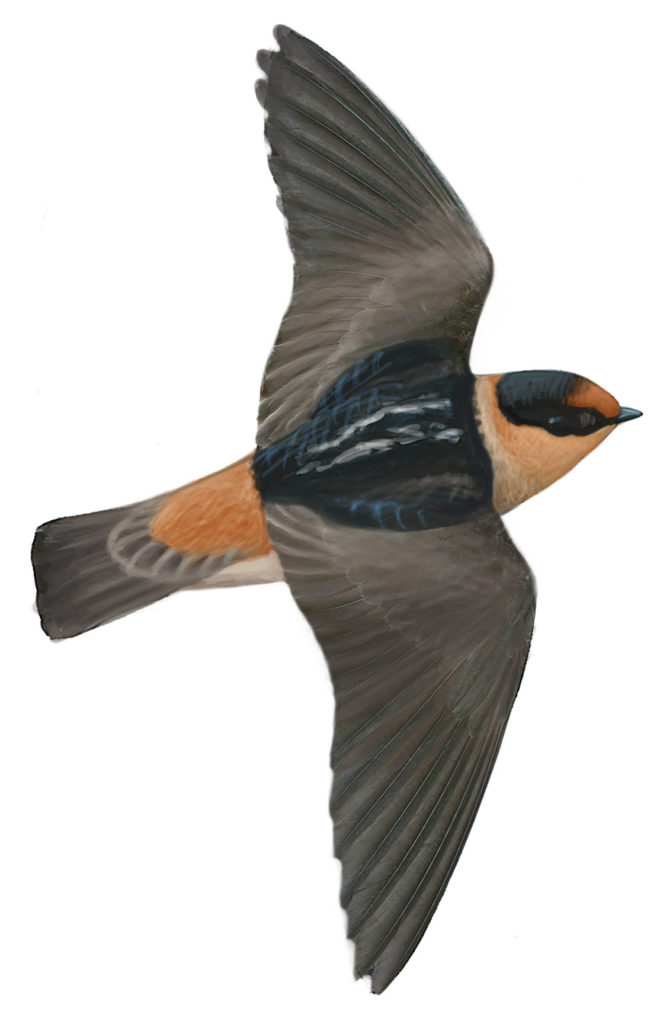
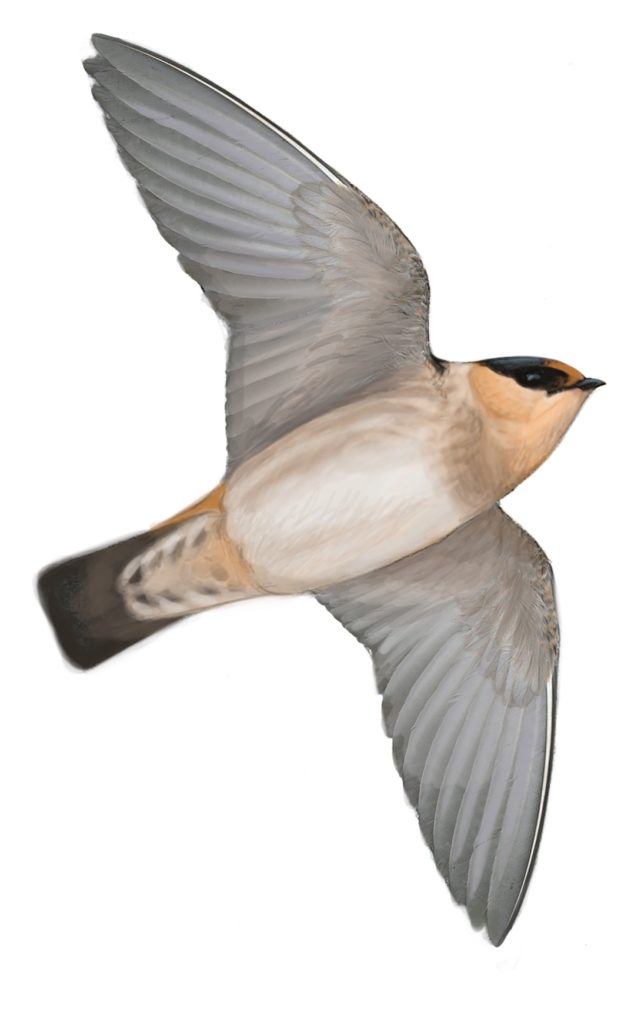
Mexican (or Texas) subspecies – darker individual
Images below show a darker individual of the Mexican population. Birds like this are superficially very similar to the Caribbean population with darker cheeks and rufous-tinged streaks on the flanks, and this range of variation is obvious when looking at a group of Mexican Cave Swallows. These birds might be distinguishable from Caribbean birds by the slightly paler rump and more uniform rufous throat, but both of those things are hard to judge in the field, and their reliability is uncertain.
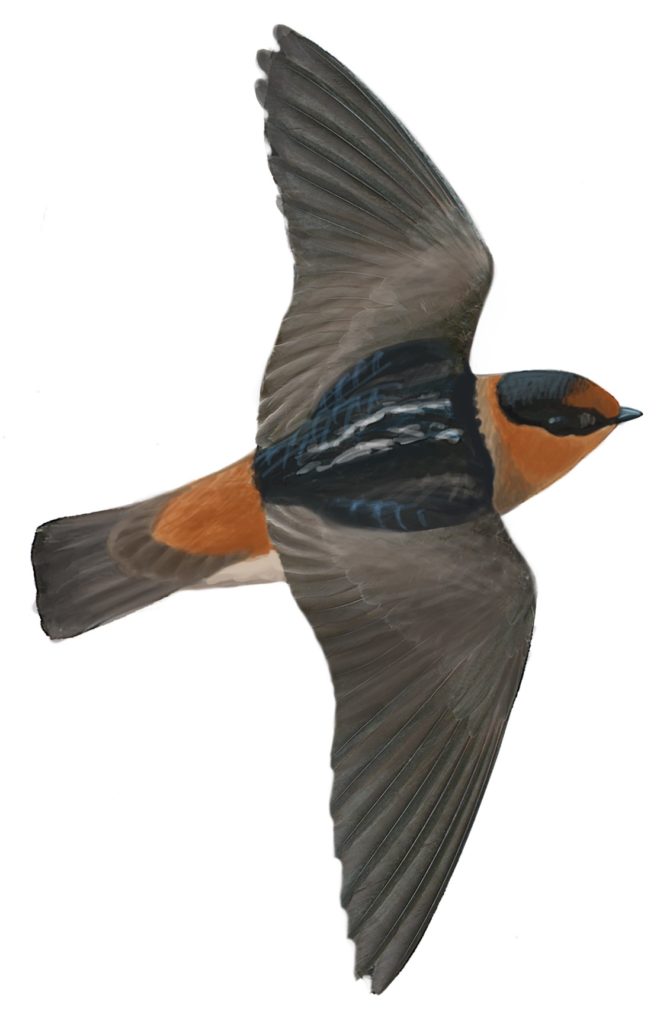
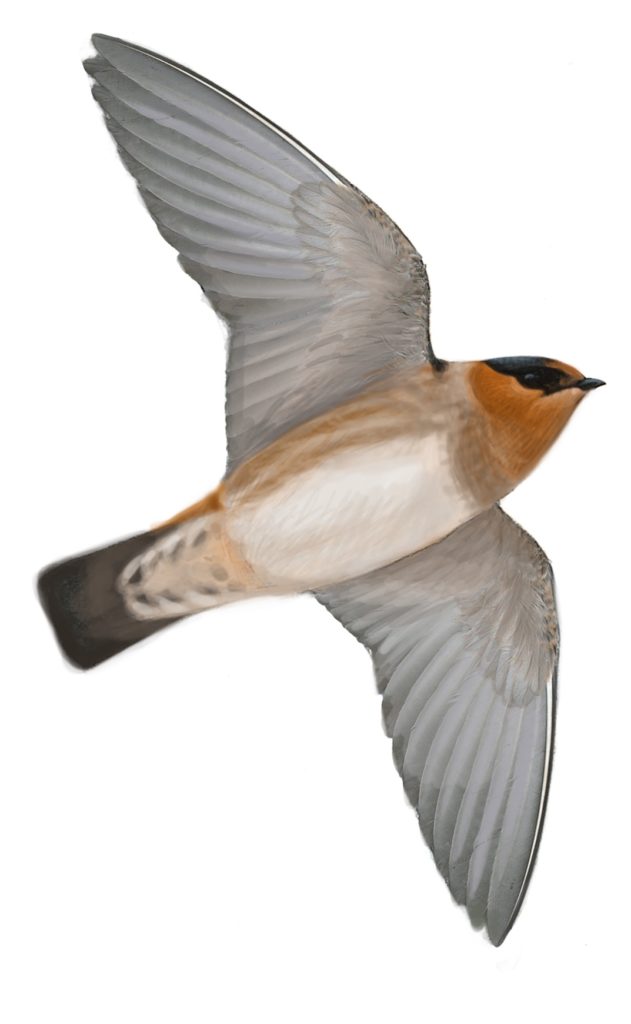
Caribbean subspecies group – paler individual
Images below show a paler individual of the Caribbean population. Birds like this are extremely similar to many in the Mexican population. Differences that might be worth looking for are a darker rump (essentially always but this can be very very difficult to ascertain in the field), and more contrast between darker rear cheeks and the paler color just below the eye.
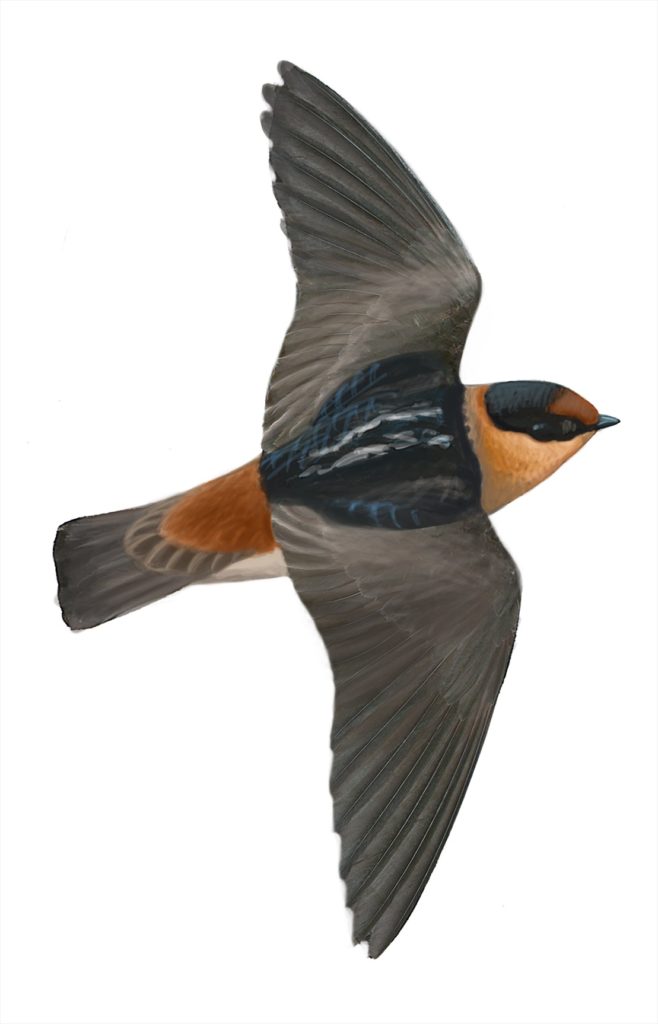
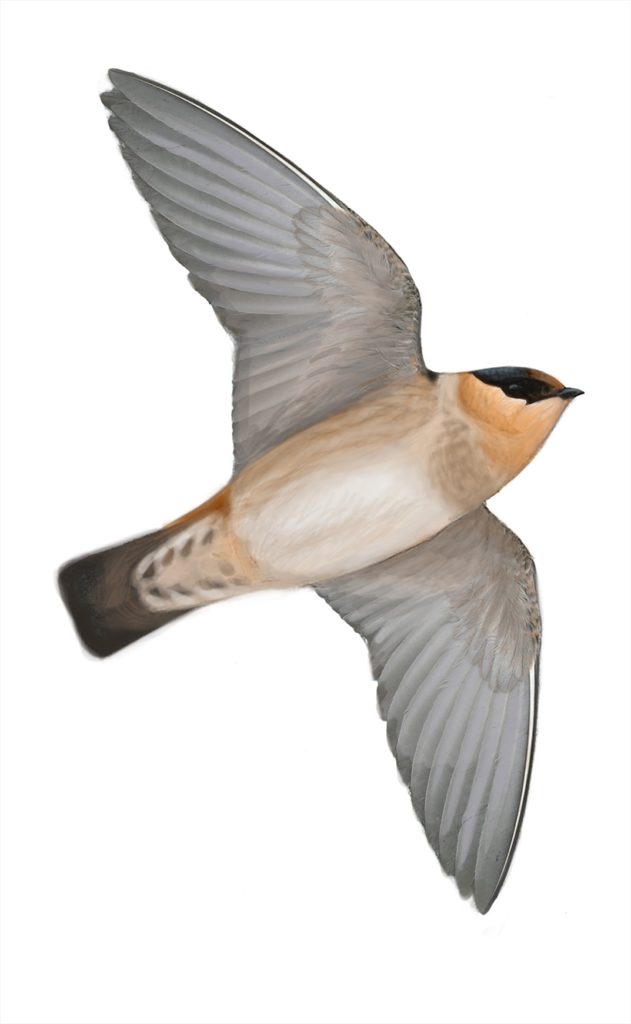
Caribbean subspecies group – darker individual
Images below show a darker individual of the Caribbean population. Birds like this are fairly distinctive and probably safely identified in the field, and the recent New Jersey and Massachusetts records both match well with this type, showing a very dark rufous rump and dark brownish streaks on the flanks.
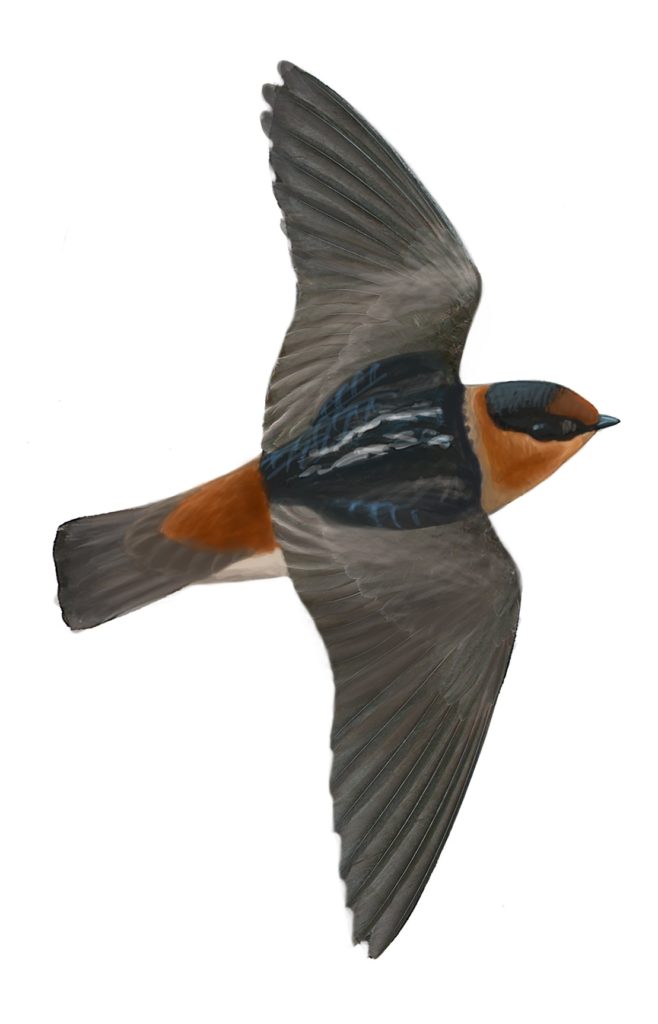
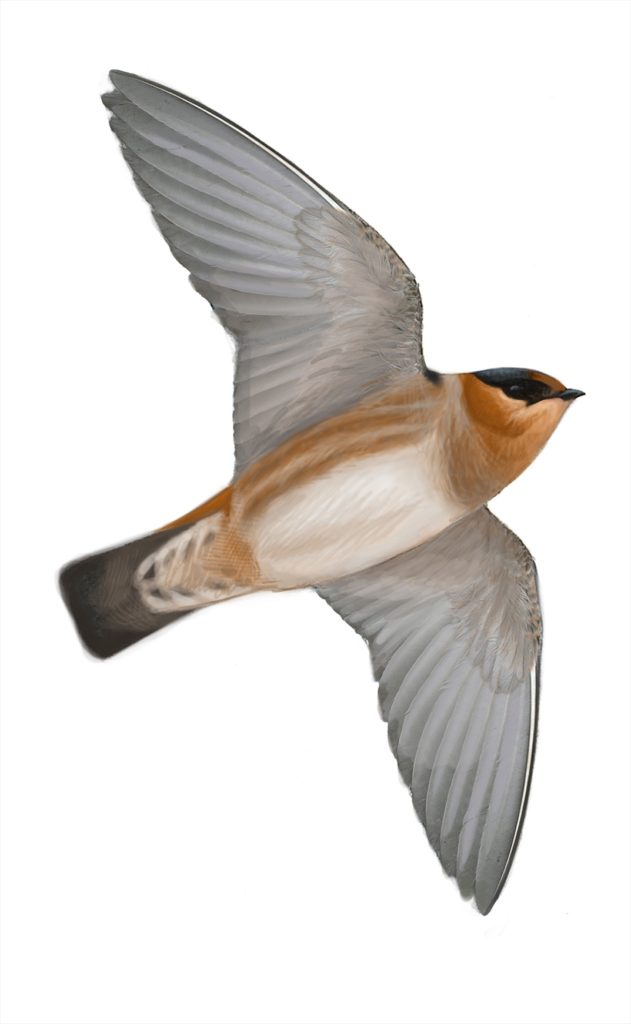
Summary of features
- rump color – averages distinctly darker and more saturated rufous in Caribbean birds. In specimens (where a direct comparison can be made) this feature alone separates the vast majority of adults, but there is variation and some near or actual overlap in color. In the field any group of Cave Swallows will show a range of rump colors, and the vagaries of lighting and fleeting views make it hard to verify subtle differences in color. This may be the most reliable single feature, but that’s not saying much.
- cheek color – This is extremely variable in both populations, from pale buff to dark rufous. Caribbean birds average darker, and also average less uniform, with a band below the eyes to the chin often distinctly paler than the rear cheeks. These tendencies probably identify many individuals correctly, but there still seems to be a lot of overlap. The limits of variation in each population remain to be determined. Photos of two birds at a nest often show one dark- and one light-throated, and I wonder if some of the variation could be a pattern of sexual variation as in Barn Swallow.
- forehead color – Averages slightly darker in Caribbean birds, but hard to judge in the field. It is generally darker than the rump or the throat on all birds.
- flank streaking – Extremely variable in both populations, from obvious dark rufous streaks (many Caribbean birds) to only faint pale gray-buff streaks (many Mexican birds). The extremes of variation might be identifiable by this feature alone, but there is plenty of overlap, and it can be extremely hard to judge in the field.
- undertail covert color – There is variation with some birds having darker and bolder spots on the undertail coverts, others just soft gray smudges, and some have darker rufous color around the vent while others have off-white or pale buff there. There may be a tendency for Caribbean birds to be darker and more richly colored in these two features, and this deserves further investigation, but I couldn’t find any consistent difference in specimens or photos.
- uppertail covert color – Some birds have obvious pale fringes on the uppertail coverts while others are more uniform dark (variation shown above). Both populations seem to show both extremes so this is probably not useful for identification, but Caribbean birds might average darker.
- overall size – Caribbean birds average significantly smaller than Mexican, and this is often apparent in the field. Combined with other features, an impression of size might be the deciding factor in an identification.


Hi Mr. Sibley, I’ve seen similar swallows like this, but they weren’t cave swallows. They were barn swallows. They looked exactly like them! It was really hard to distinguish. If you want to know where I saw them, I saw them at Alviso Marina County Park in CA.
I hope you find this comment useful